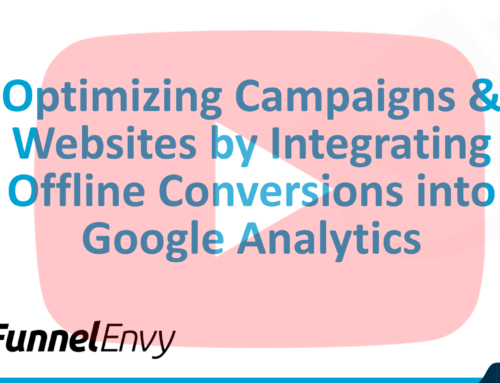Ever have a friend who’s having relationship problems or going through a bad breakup?
It seems like they could just go on and on about it forever. It’s like a switch goes off. Even the shy types can’t resist spilling all the grim little details.
When someone has a problem, they can’t stop talking (and thinking) about it.
You can use this to build your credibility and make sales online.
You just need the right strategy to do it…

Photo Credit: Jared and Corin via Wikimedia Commons
Selling Online is an Art, Not a Shouting Match
Trying to sell to prospects online like the guy yelling, “hot dogs!” over and over again at a baseball game just doesn’t work.
That “strategy” works well enough at a ballpark, but that’s because you’re stuck there for hours and there isn’t much other food available. It doesn’t fly online, when your prospects have so many other options.
An aggressive, hardnosed approach online can drive your prospects straight into the digital arms of your competitors.
Plenty of businesses recognize this. So they change their tactics, but they get confused when their softer sales messages don’t give them the results they’re looking for.
Where Many Businesses Go Wrong

Photo Credit: doobybrain via Flickr
Many businesses go too far in their quest to avoid getting lumped together with used car salesmen in their prospects’ minds.
In their quest to keep everything above board and not be salesy, they manage to take the “sales” out of “selling.”
Their new approach gets them plenty of credibility and trust from their visitors. But it doesn’t get them the revenue they need to pay their mortgage and grow their business.
What these people need is a balanced approach. They need a way to get people to know, like, and trust them and still get them engaged enough to take action and buy their products.
A Time-Tested, Balanced Solution
Remember the friend from the beginning of this post? The one who couldn’t stop talking about their relationship woes?
The solution to your marketing dilemma goes back to that. It wears many hats – content marketing, “selling through education,” and relationship marketing are just a few—but businesses have been using the techniques for centuries.
John Deere has been doing this since 1895, when they published a magazine showing farmers how to become more profitable. Jell-O started 9 years later, when their salesmen gave out cookbooks featuring Jell-O-based desserts.
The principles boil down to the same basic idea: give your prospects content they find valuable by educating them on topics they can’t get enough of—their problems and frustrations—to build credibility and drive sales.
It sounds like a tall order, but it’s simpler than you might think.
The Blueprint to a Better Marketing Strategy (and More Sales)

Photo Credit: Joy Oil Co Ltd via Wikimedia Commons
Most people won’t bother listening to you in today’s online space unless they feel they’re getting something valuable in return.
That’s the foundation of a more effective marketing strategy. You need to create content people find valuable and deliver it to create a feeling of reciprocal exchange.
Most businesses fail on both of these points. They don’t create content their visitors find valuable or interesting. Even if they do, plenty of them screw up when it comes to presenting it in a way that builds trust and credibility while still getting sales.
Let’s take a look at these stumbling blocks to figure out how you can overcome them:
Step 1. Creating Valuable Content

Photo Credit: Wikimedia Commons
Most content online is a dime a dozen at best and a complete waste of time at first. The competition’s growing every day, but you can come out on top if you learn and apply a few timeless principles.
Here are a few fundamentals to creating content that educates visitors and motivates them to act:
Target the Right Audience
You might think your content’s valuable… but valuable to whom?
It’s easy to write about topics you find interesting personally, but bore your ideal customers to tears. You might want to talk about your job promotion, but your friend just wants to talk about their relationship problems.
Make sure you’re laser-focused on topics that would interest your ideal customers. Not your competitors or others in your industry. And definitely not just you.
Identify Emotional Pain Points Behind Visitors’ Problems
People buy based on emotions, and then they justify their decisions using logic. That’s why it’s so important to tap into the emotional root of your visitors’ frustrations.
Your friend with the relationship problems doesn’t have any interest in reading a psychology textbook about why the relationship went wrong. They just want to engage with you on an emotional level (at least at first).
Take a moment to think about what you’re really selling. Unveil the curtains that get to the emotional core of things. Why do your prospects want the result you can deliver?
You aren’t selling a weight loss drug. You’re selling newfound confidence, a better marriage, and looking great in a swimsuit.
Content that hits emotional buttons engages people, makes them receptive to share it, and eager to come back for more.
Consider Content From Related Niches
No one said you could only produce content specifically about your little niche.
But most businesses follow this like it’s a federal law. They pump out the same kind of content over and over again. It doesn’t take long to exhaust the topic and start to bore people.
If you’re a real estate agent specializing in starter homes, you don’t just have to talk about real estate. You could also talk about other things first time homeowners would find useful: home security, interior design, lawn care, landscaping, etc.
Don’t be afraid to mix it up. Creating content about related industries will help you educate your prospects and add value to their lives in a way most of your competitors won’t. It’ll make you memorable for all the right reasons.
Do Some Competitor Research
Your competitors might have marketing issues of their own to sort out, but that doesn’t mean they haven’t ever hit on any hidden gold.
Check out the content they produce on their blogs, podcasts, and videos. Focus on the most popular articles—the ones that get people riled up in the comments section and have the most social shares—for new topic ideas.
Pay attention and watch out for patterns and trends. Your competitors might’ve found a few emotional hot buttons that engage customers just like the ones you’re after.
You can create content within similar topics to better your chances of getting people engaged and coming back for more.
Stand Out
How is your content different than ocean of information already available?
Your marketing won’t thrive if you pump out dry, predictable content that your customers have seen 100 times already.
Just like with your product or service, your content should have its own Unique Selling Proposition (or USP). It should be clear why people should pay attention to you instead of anyone else.
How you choose to distinguish yourself is up to you. You just need to make sure there’s something that your content can do for people that nobody else’s can.
Step 2. Delivering The Goods

Photo Credit: fortinbras via Flickr
Creating great content is just half the battle…
How you package and distribute your content has a huge effect on whether someone will pay attention to it long enough to get hooked. If they can’t do that, most people won’t end up becoming customers.
Email Autoresponders
Email autoresponders are one of the best tools for educating your prospects and gradually move them closer to becoming customers.
Sign up with an email provider and configure your autoresponder sequence. Then set up an irresistible opt-in form and you’re ready to go!
You can’t expect potential customers to come back to your site multiple times before buying, and a smart email marketing campaign removes that burden. You get to deliver a consistent stream of valuable content to the intimate setting of their email inbox.
Check out this excellent article from Brennan Dunn for some tips about setting up an email course. Another great strategy is to sign up to as many great email marketers’ lists as you can and watch how they operate. Derek Halpern, Ben Settle, and Marie Forleo are great people to start with.
Reports and White Papers
Reports, white papers, and other similar “long-form” content are great ways to deliver a huge shot of value to your visitors all at once.
You can make these available as free downloads on your website, or you can use them as an incentive to get visitors to opt-in to your email list.
Don’t know what to write out? Think of one problem your ideal customers would love to solve. Design and package your content as the solution to that problem. You don’t have to do too much with this.
The Path to Long-Term Relationships and Profits
If you can find a way to tap into the emotional root of your prospects’ problems, you can make people happy to learn from and respond to your marketing materials.
Selling through education takes more work than paying for traffic, but it puts you on the building long-term relationships and an expanding base of loyal customers.
How do you find valuable content to deliver to your prospects? Leave us a comment below and let us know!






